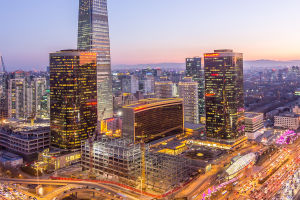In recent years, the concept of mega buildings has captured the imagination of architects, engineers, and urban planners around the world. These towering structures, often reaching unprecedented heights and incorporating cutting-edge technology, represent the future of building design and construction.
This article explores the reasons why mega buildings are poised to dominate the architectural landscape in the coming decades.
1. Maximizing Limited Space:
As urban populations continue to surge, the availability of land for traditional horizontal expansion is diminishing. Mega buildings offer a vertical solution to the scarcity of space, allowing cities to accommodate growing populations without encroaching on valuable land resources. By stacking multiple floors and incorporating state-of-the-art engineering techniques, these structures make efficient use of limited space, optimizing urban development.
2. Sustainability and Energy Efficiency:
Mega buildings are at the forefront of sustainable architecture. They integrate advanced energy-efficient systems, such as solar panels, wind turbines, and rainwater harvesting, to reduce their carbon footprint and reliance on conventional energy sources. The vertical design of mega buildings also enhances natural ventilation and lighting, reducing the need for artificial cooling and lighting during the day. Additionally, the incorporation of green spaces, vertical gardens, and urban farming promotes biodiversity and improves air quality.
3. Technological Advancements:
The future of building lies in the seamless integration of technology into every aspect of construction. Mega buildings are leading the way by incorporating smart systems and advanced materials.
From intelligent building management systems that regulate temperature, lighting, and security to innovative materials like self-healing concrete and energy-generating facades, these structures showcase the cutting-edge technologies that will shape the future. Furthermore, the implementation of artificial intelligence and robotics streamlines construction processes, reducing costs and increasing efficiency.
4. Iconic Architectural Landmarks:
Mega buildings often serve as iconic landmarks, attracting tourists and adding to the cultural identity of a city. These architectural marvels push the boundaries of design, combining aesthetics with functionality. Examples like the Burj Khalifa in Dubai or the Shanghai Tower in China have become symbols of human ingenuity and ambition. Mega buildings not only inspire awe but also act as catalysts for economic growth, attracting investment, tourism, and international attention.
5. Vertical Integration and Mixed-Use Spaces:
Mega buildings offer the potential for vertical integration, enabling the integration of various functions within a single structure. From residential apartments and offices to shopping malls, hotels, and recreational spaces, these buildings create self-contained communities where people can live, work, and play.
The convenience of having multiple facilities within proximity reduces commuting time, promotes sustainable urban living, and enhances the overall quality of life.
6. Disaster Resilience:
Mega buildings are designed to withstand natural disasters and provide refuge during emergencies. The robust construction techniques, reinforced materials, and stringent safety standards employed in these structures make them more resilient to earthquakes, hurricanes, and other calamities. Their vertical nature also allows for effective evacuation and emergency response strategies, ensuring the safety of occupants.
Mega buildings represent the future of building design and construction, offering solutions to the challenges posed by rapid urbanization, limited space, and environmental sustainability.
These towering structures combine technological advancements, sustainable features, and iconic design to create vertical communities that redefine urban living. As cities continue to grow, mega buildings will play an instrumental role in shaping the skylines and meeting the evolving needs of society. With their ability to maximize limited space, embrace innovation, and create sustainable environments, mega buildings are poised to revolutionize the architectural landscape in the coming decades.


